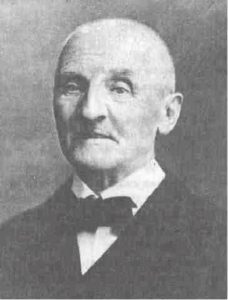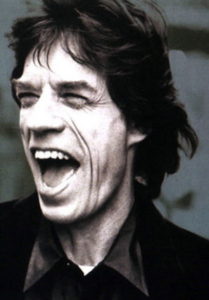“Would the New York Philharmonic sing Palestrina?” – the question posed by my previous blog – arose from a recent performance of Bruckner’s Fifth Symphony in which the musicians did precisely that. The conductor was James Ross, whose University of Maryland Orchestra breaks the mold. Jim writes:
“’Sense of occasion’ is absolutely the goal; that there are unique reasons why a certain program is taking place with this orchestra in this community on this particular day . . . Concerts should be singularly memorable and unrepeatable. No performance of the Rolling Stones on tour fell short of that goal despite their getting up the next day and doing ostensibly the same concert again each night. That’s why they had groupies! . . . If the only reason some people still come to classical concerts is to hear a specific piece or pieces played live rather than at home, I suspect that specialty audience is now officially well on the way towards extinction. The ones we need to curate are those who come because they expect that something is about to happen, that something about the live experience will offer up ‘a sense of moment’ that will allow unexpected connections and recognitions to unfold for each listener. Those seeking the ‘moment’ are sorely and sadly disappointed at most of our concerts, I fear. This is on us conductors to change by unleashing and challenging those in front of us first, and then helping those behind us to understand why we’re doing what we do, what motivates us. Addressed well, I think just about any audience will give just about any piece a fighting chance of being heard and appreciated.”
So for his Bruckner Fifth – a work little known to his musicians or his College Park audience — Jim began with a little talk about what he was doing:
Then the orchestra sang Palestrina:
The University of Maryland Concert Choir furnished further Palestrina excerpts before each of the symphony’s movements “to give a musical and visceral sense of the fountain from which Bruckner’s sacred symphony springs.” Finally, for the refulgent closing reprise of the chorale theme, Jim had the Concert Choir (in a balcony) sing along to the text of Kyrie Eleison. It sounded like this:
This enthralling experiment ignites memories of another – Bruckner’s Ninth as rendered by the Pacific Symphony (I’m the Artistic Advisor) five years ago. Carl. St. Clair, the orchestra’s remarkable conductor, is a devout Catholic. The composer with whom he bonds completely is Bruckner. Carl’s humility, and also a deficit in opportunity, have long deferred experiences with this composer that Carl was born to undertake.
Carl’s Bruckner 9 was his first. The work and the composer were virtually unknown to his Orange County audience. Carl reads this final Bruckner opus as a gripping religious narrative of trial and redemption. For him, the pounding Scherzo signifies a crucible of carnal temptation which the dying composer must endure. The Adagio’s three cataclysms signify a further rite of passage recalling the agonies of Christ. The coda’s beatitude is a leavetaking literally envisioned: the apocalyptic visions sited, the radiant halo of divinity towards which the humble believer ascends and into which he is absorbed.
Carl wanted to begin the evening by imparting this narrative, but without giving the work away or diminishing the orchestra as an audio-clip tool. So he engaged Paul Jacobs to play the necessary excerpts on the organ. The first half ended with Paul performing Bach’s St Anne Fugue (gloriously). It began with a sung processional by a chorus of Norbertine Fathers.
Carl’s reading of Bruckner 9 was intensely transporting. He lived the piece. Segerstrom Hall has a choral loft; the listeners there face the conductor. In two of our three performances, there was a medical incident during the Adagio – someone there passed out and needed professional attention. On the second such occasion, Carl had to stop the symphony and ask the audience to pray. I am certain that these events were not coincidental.
Not every Bruckner performance requires an act of contextualization. I vividly remember, at Carnegie Hall, No. 4 with Sergiu Celibidache and the Munich Philharmonic, and No. 8 with Eugen Jochum and the Bamberg Symphony at the very end of Jochum’s life. Both these conductors established a sense of occasion the moment they set foot on the stage. Celibidache was an acquired taste; you had to listen on his own terms. I knew I would be hearing a slow-motion Bruckner 4 (it lasted 80 minutes) and prepared by getting stoned. The Jochum Bruckner 8 was wholesome, purged of the demonic. In the opening of the Adagio, he conjured colors never before heard. None of the Bruckner Jochum recordings I’ve come across are anything like what I encountered on this magical occasion.
Celibidache and Jochum were great Bruckner conductors galvanizing an audience predominantly familiar with Bruckner. Those days are mainly gone. What will ultimately impel orchestras to finally rethink the concert experience? Jim Ross writes:
“Can anything more be expected of the orchestra as an institution if the job description of its players stays the same? The human force of 100 players either encouraged or denied the opportunity to have the orchestra be a place of personal growth, experimentation, and creativity is just too strong to fight. It will come from them and with them, or it won’t come at all, in my opinion.”
My friend Mark Clague at the University of Michigan, an exceptional educator, said the same thing in his June 30 response to my initial mega-blog:
“It’d be best, I think, if the real driver of change will be the imaginative career goals of music students (and by extension future musicians). If students come to school or develop a broader definition of what success could mean, they will demand an education that leads toward this success — say as experts in community engagement. At this point, we’re in something of a vicious circle where success (say at a traditional orchestral audition) is defined by performance skill alone and thus schools are caught between narrow and broader paradigms. Because auditions are inhumanly competitive, schools focus all educational activities prior to winning an audition on such singular success. This leads to the collegiate orchestra, indeed the whole music school on some level, focusing only on teaching traditional repertoire that will appear on such auditions. The collegiate orchestra as a broad, flexible educational tool that you envision would be a powerful innovation . . . Short of a traumatic crisis, it’s hard for me to see change here coming from the top, however. It needs to come from our students. They vote with their applications, their enrollments, and the classes that they choose to take. I hope their courage and openness will allow us all — from professors to professional musicians — to embrace these opportunities.”
I agree – the more the musicians know about the cultural institution of which they’re part, the more they participate, the better for everyone. Returning from my three weekends of music conferences, I rebuked myself for never having thought to invite any PostClassical Ensemble musicians onto our board. So beginning next season the PCE board of directors will include our principal trumpet, Chris Gekker, and our principal percussionist, Bill Richards.
Bill anchored last season’s percussion program featuring Lou Harrison’s sui generis Concerto for Violin and Percussion (which we both performed an recorded with Tim Fain). Chris (known to all brass players) has lent distinction to countless PCE performances. I am thinking especially of the Gershwin Concerto in F (the second movement’s divine blues) and of our new Naxos DVD of Redes. Next spring, he takes part (with Alexander Toradze) in Shostakovich’s Piano Concerto No. 1 (which began life as a trumpet concerto).
The same Shostakovich program features Edward Gero (a leading DC actor) as Shostakovich in a 20-minute Theatrical Interlude. We’ll also explore the relationship between Shostakovich and Mieczyslaw Weinberg. The larger topic is “Music Under Stalin.”
The season begins with “Mozart, Amadeus, and the Gran Partita” – our way of contextualizing the most famous of all wind serenades. The concert will be hosted by Antonio Salieri. The participants include the Washington Ballet Studio Company. We’ll explore how Mozart transformed a genre previously associated with gossiping, flirting, and courtly minuets. The idea is to create a sense of occasion.
PS – in 2017-18 we undertake an immersion experience – “The Russian Experiment 1917-2017” – featuring the pianist Vladimir Feltsman and the composer Victor Kissine. The repertoire includes Alexandr Raskatov’s The Seasons Digest – which asks the musicians of the orchestra to sing.




Leave a Reply